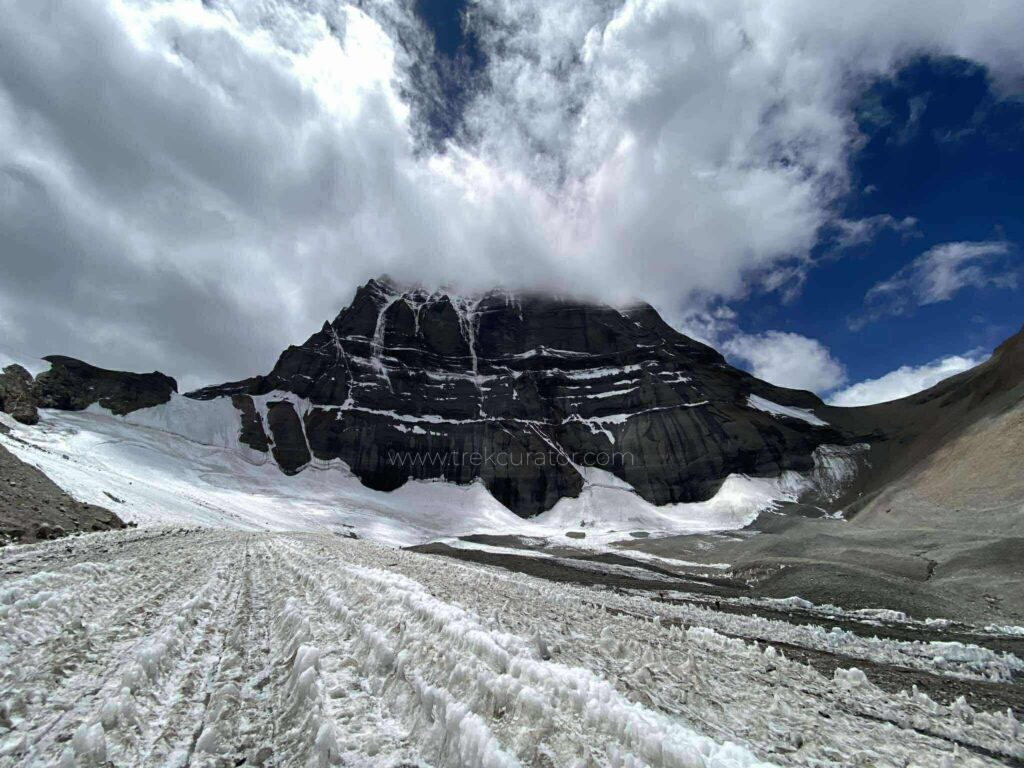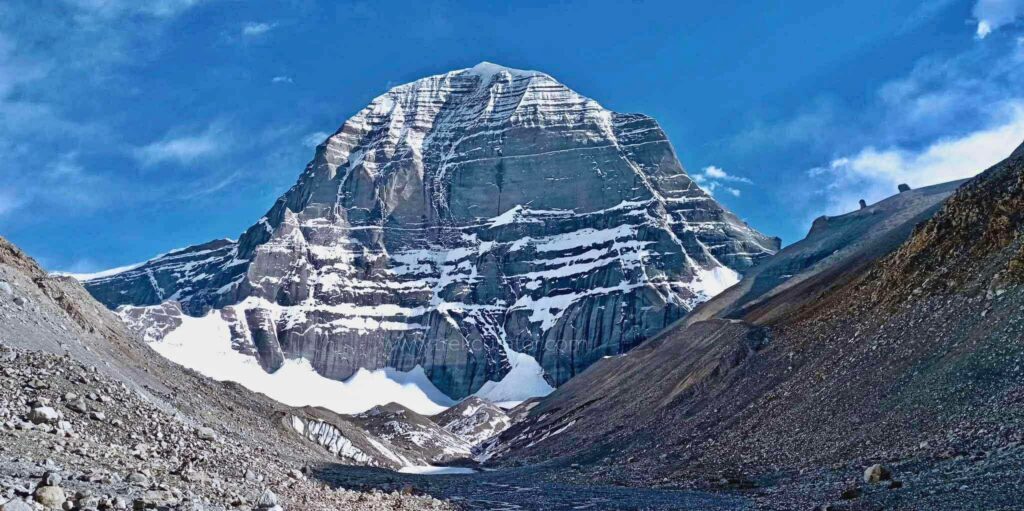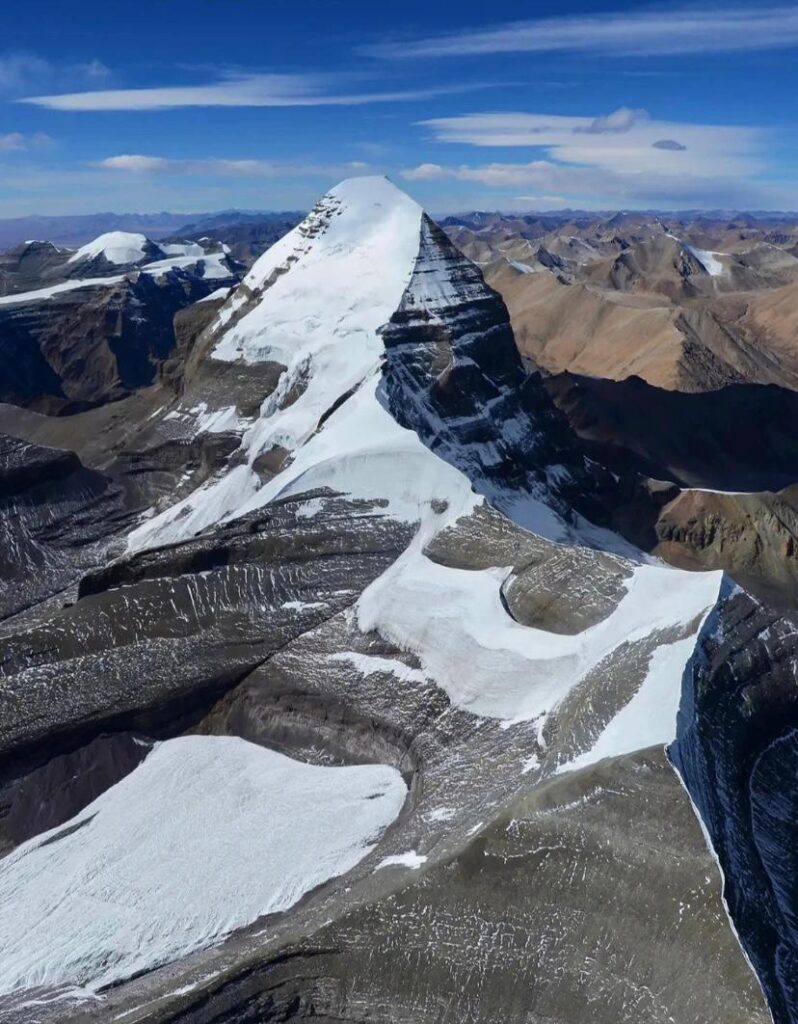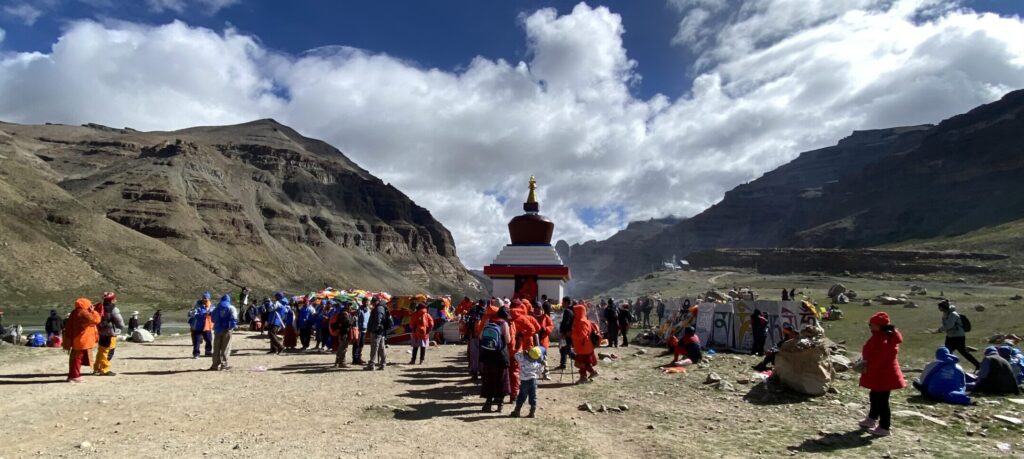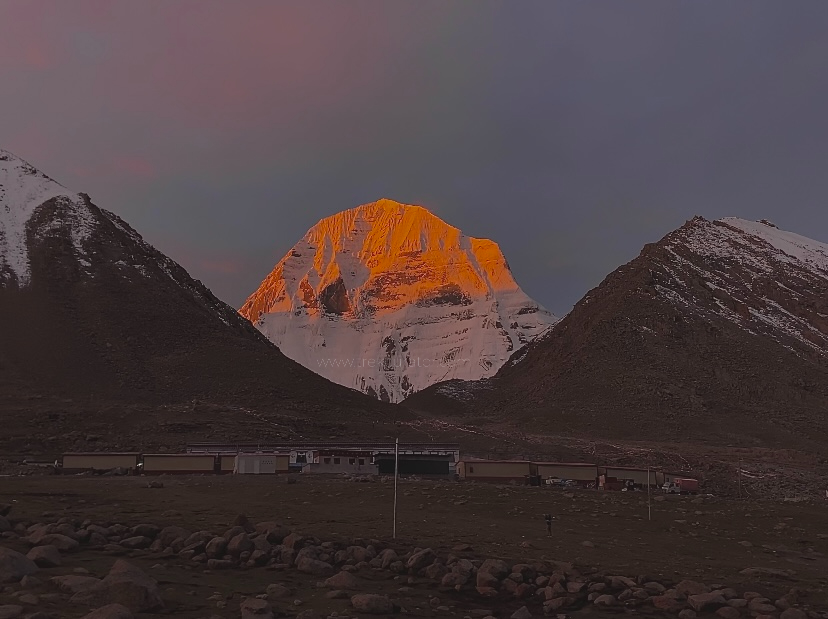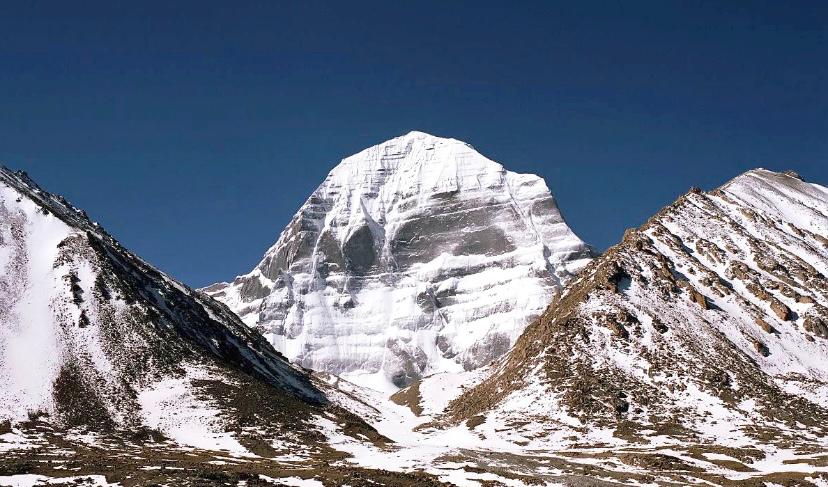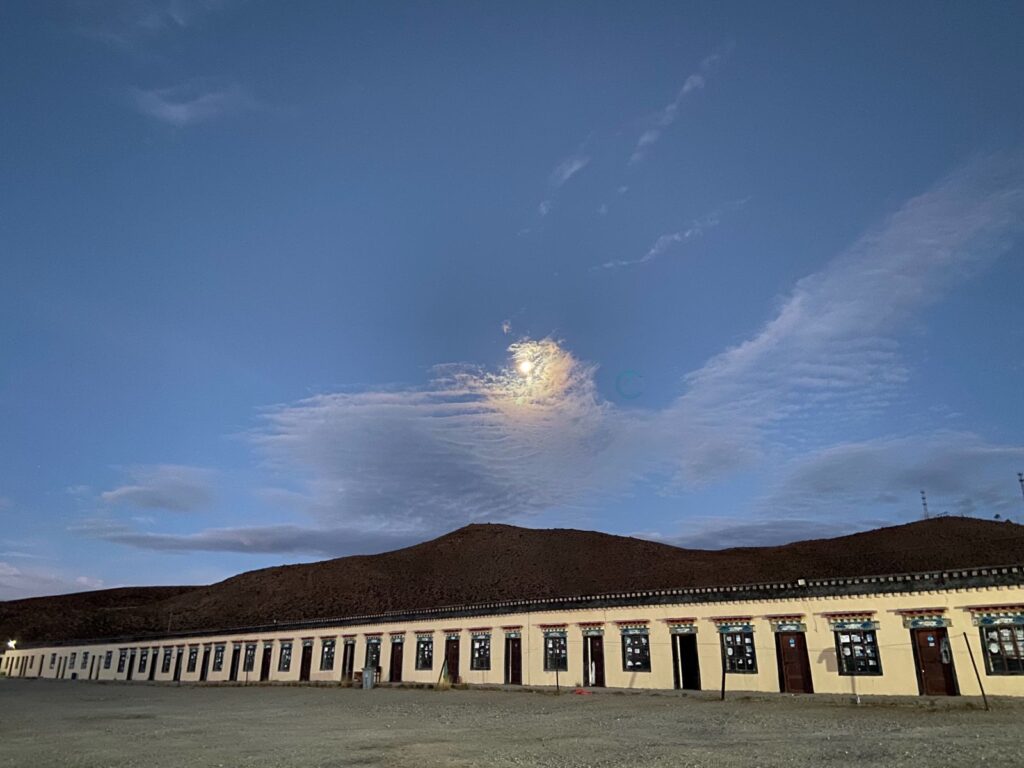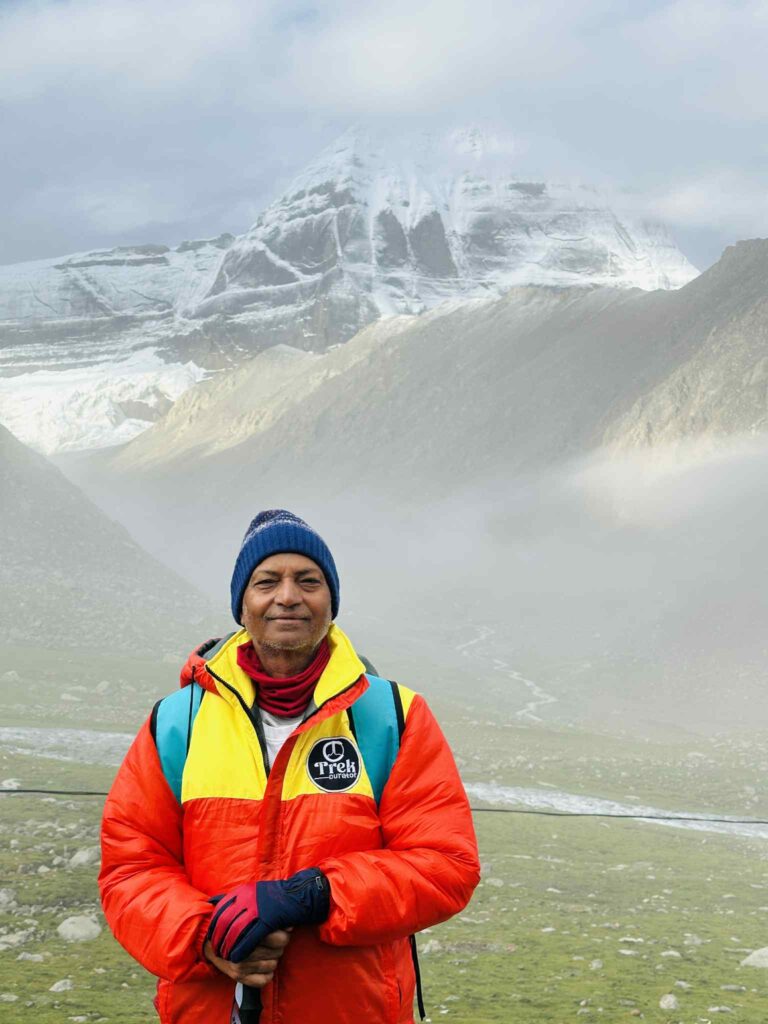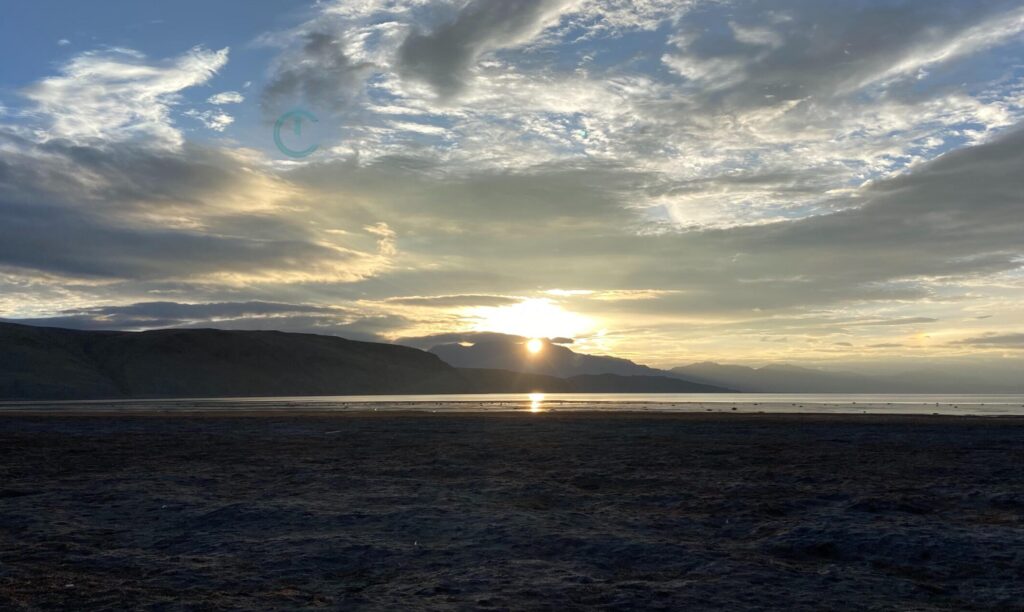Kailash Mansarovar Yatra Overland via Kerung
6 reviews
Overview
The overland route for the Kailash Mansarovar Yatra via Kerung has long been one of the most popular options among Shiva devotees, especially for those embarking on the sacred Kailash Mansarovar journey. For followers of the Hindu faith, this pilgrimage is not just reverent, it’s deeply transformative.
Our Kailash Mansarovar Yatra Overland via Kerung 2025, a carefully curated 14-day itinerary filled with adventure, peace, and spirituality, begins in Kathmandu. From there, you’ll embark on a scenic drive to Kyirong, crossing the Nepal–Tibet border and entering the mystical lands that lead to Kailash. This package is ideal for those seeking both spiritual fulfilment and a manageable travel experience, with comfortable drives, breathtaking landscapes, and all key rituals included.
Organised by Trek Curator, this 14-day yatra ensures the Parikrama of both the Holy Lake Mansarovar and Mount Kailash, along with sacred stops. One of them is Shivasthal, a revered site where it is believed that whatever you offer is returned to you in heaven. Crossing Dolma La Pass, the highest elevation of 5612 meters. Even in the face of unpredictable weather, we’re committed to ensuring smooth travel and support throughout.
Whether it’s your first visit or a long-awaited return. This route is often done via bus, and sturdy Jeep and Vans remains the first choice for many, blending pilgrimage yatra with comfort. Interested in joining the next departure for Kailash Mansarovar Yatra? Let’s help you plan and prepare for this transformative journey.
About Mount Kailash and Lake Mansarovar
Mount Kailash, standing tall at 6,638 meters, is not just a mountain; it is a spiritual beacon. Sacred to four major religions, Hinduism, Buddhism, Jainism, and Bon, Kailash is believed to be the earthly manifestation of Mount Meru, the cosmic centre of the universe.
For Hindus, it is the eternal home of Lord Shiva, the God of transformation and destruction. Buddhists associate it with Demchok, the deity of supreme bliss. Jains believe that their first Tirthankara attained liberation here, and Bon followers consider it the soul of their spiritual universe.
Nearby lies Lake Mansarovar, a crystal-clear freshwater lake situated at an elevation of over 4,500 metres above sea level. The name ‘Manas’ means mind, and ‘Sarovar’ means lake. It is said to have been first conceived in the mind of Lord Brahma. Pilgrims bathe in its waters, believing it cleanses lifetimes of sin, while others simply stand in awe of its tranquillity. The reflections of Mount Kailash on the lake, especially at sunrise or sunset, are moments you’ll never forget.
The Three-Day Kailash Parikrama
The Kailash Parikrama, or circumambulation, is the spiritual highlight of the journey. A three-day trek covering 42 Km that demands physical endurance and offers immense spiritual rewards. While challenging, the trek is supported by experienced guides, staff, and yaks, and you can also hire porters and pony horses, making it accessible to travellers.
The trail begins from Darchen, slowly winding along the Lha Chu Valley. This stretch offers your first full view of Mount Kailash’s north face, an awe-inspiring moment that leaves many pilgrims deeply moved. By evening, you’ll reach Dirapuk Monastery, nestled at the base of Kailash.
The second day is the most physically demanding and spiritually intense. You’ll ascend to Dolma La Pass (5,630m), the highest point on the trek, passing Gauri Kund, a sacred glacial lake. The descent to Zuthulpuk tests your endurance but also brings a sense of rebirth. The final leg is a more relaxed descent, giving you time to reflect on the journey and everything you’ve experienced. On reaching Darchen, your vehicles will be waiting to take you back, physically tired perhaps, but spiritually fulfilled.
Planning for 2026?
Now is the best time to start preparing. We’ll handle your permits, travel logistics, and spiritual needs from the border crossings to the Parikrama, and everything in between. Let us help you make this sacred dream a reality.
Note: For Non-Resident Indians (NRIs), two extra days in Kathmandu for Visa Processing. Contact our travel expert for more details.
“Want a personalised quote or more details about group departures and travel preparation? Reach out today, and we’ll walk you through it step by step.”
✅ What's Included:
- Airport pickup and drop-off using a private vehicle
- All ground transportation by private vehicle
- One day of sightseeing in Kathmandu
- 3 nights of hotel accommodation in Kathmandu (twin sharing)
- Guesthouse accommodation in Kailash as per the itinerary (shared)
- Buffet Indian vegetarian meals (breakfast, dinner, and packed lunch) during the trip
- Transportation provided by bus or van
- Support truck for carrying goods, bags, and food
- Tibet permit and Tibet Group Visa
- All necessary entrance fees in the Kailash Region
- All camping equipment for the kitchen
- Sufficient oxygen cylinders and a pillow
- All service charges and taxes
- Down jacket (refundable), duffel bag, and daypack
- Appreciation certificate from Trek Curator after the yatra
❌ Price Excludes:
- Personal horse and helper during Kailash Parikrama/Kailash Round/Kailash Kora
- Additional nights in hotels/guesthouses (other than those specified in the itinerary)
- Rescue or evacuation costs, or any extra expenses incurred from detaching from the main group or due to serious health conditions
- Travel insurance
- Personal expenses
- More than one night stay in Darchen due to certain circumstances
- Extra costs resulting from flight delays or cancellations due to valid reasons
- Additional costs due to late permits or visas from the Tibet side
- Tips for staff
- Upgrading hotels or guesthouses during the trip
Itinerary Overview
Day 1: Arrival in Kathmandu (1,400m)
Day 2: Kathmandu Sightseeing
Day 3: Drive from Kathmandu to Syabrubesi (1,460m) – Approx. 145 km / 7-8 Hours
Day 4: Drive to Kerung (2,700m) via Rasuwagadhi Border – Approx. 45 km / 2–3 Hours
Day 5: Rest & Acclimatization in Kerung (2,700m)
Day 6: Drive from Kerung to Saga (4,640m) – Approx. 165 km / 6–7 Hours
Day 7: Drive from Saga to Lake Mansarovar (4,590m) – Approx. 450 km / 7–8 Hours
Day 8: Lake Mansarovar Exploration and Drive to Darchen (4,575m) – Approx. 60 km / 2 Hours
Day 9: Drive to Yamadwar and Trek to Derapuk (4,920m) – First Day of Kailash Kora – 12 km / 6-7 Hours
Day 10: Trek from Derapuk to Zuthulpuk via Drolma La Pass (5,630m) – Second Day of Kailash Kora – Approx. 22 km / 9–10 Hours
Day 11: Finish Kailash Kora and Drive back to Saga – Third Day of Kailash Kora – Trek 8 km / Drive Approx. 460 km
Day 12: Drive from Saga to Kerung – Approx. 165 km / 6–7 Hours
Day 13: Drive from Kerung to Kathmandu – Approx. 165 km to border + 155 km to Kathmandu / Total 9–10 Hours
Day 14: Departure from Kathmandu – Transfer to Airport
Detail Itinerary
Arrival in Kathmandu (1,400m)
Upon landing at Tribhuvan International Airport, you’ll be warmly greeted by our local representatives, who will assist you with the airport formalities and transfer you to your hotel in the heart of the city. The drive to the hotel takes around 20 to 30 minutes, offering a glimpse into the vibrant streets and cultural essence of Nepal.
After check-in, take time to unwind, freshen up, and acclimatize to the mild altitude. Depending on your arrival time, you may choose to explore nearby markets or simply relax and enjoy a quiet evening. Dinner will be served at the hotel, and you’ll meet your fellow yatris, an opportunity to connect with those who will share this once-in-a-lifetime pilgrimage.
Kathmandu Sightseeing
The day begins early with a wholesome breakfast at your hotel before embarking on a spiritual sightseeing tour across some of Kathmandu’s most revered temples. Your first visit is to Pashupatinath Temple, the most sacred Shiva shrine outside India, set on the banks of the Bagmati River. Here, you may witness morning aarti rituals, traditional cremations, and sadhus in deep meditation, all contributing to the temple’s profoundly spiritual atmosphere.
From there, you drive to Bouddhanath Stupa, one of the largest stupas in the world and an essential center of Tibetan Buddhism. Pilgrims walk clockwise, spinning prayer wheels and chanting mantras, a powerful visual and spiritual experience. Next, visit the Gujeshwari Temple, a Shakti Peeth believed to house the yoni of Goddess Sati, a significant stop for devotees following tantric traditions.
The final stop before lunch is Jal Narayan Temple (Budhanilkantha), home to a serene, sleeping statue of Lord Vishnu floating on a bed of serpents in a pond. This peaceful temple surrounded by lush greenery contrasts with the vibrancy of earlier stops and allows for quiet contemplation.
You’ll return to the hotel for lunch and some rest. In the evening, gather in the conference hall for a detailed tour briefing led by your tour leader and guides. This session will cover everything from the overland travel plan, packing checklist, altitude readiness, medical tips, and the spiritual significance of Kailash and Mansarovar. A Q&A session ensures all your doubts are cleared. You’ll go to bed well-informed and spiritually aligned, ready for the road journey ahead.
Drive from Kathmandu to Syabrubesi (1,460m) – Approx. 145 km / 7-8 Hours
After an early morning breakfast, you’ll check out of the hotel and begin your overland journey towards Mount Kailash. Today’s drive takes you northward through winding mountain roads, charming villages, and forested hills as you leave behind the chaos of Kathmandu. The journey, while long, is filled with picturesque scenes of terraced fields, distant Himalayan ridgelines, and rural life in Nepal.
We break for lunch en route at a highway restaurant, usually near the town of Trishuli or Betrawati, depending on the timing and road conditions. You’ll have a chance to stretch your legs and enjoy a simple yet nourishing Nepali-style meal.
As the road narrows and climbs through scenic gorges, the vehicle gradually descends into the Langtang region, where Syabrubesi, a small border village, awaits. Nestled near the confluence of the Bhote Koshi and Langtang Khola rivers, Syabrubesi serves as a quiet transit hub for border-crossing travelers. Upon arrival in the late afternoon or early evening, you’ll check in to a modest yet comfortable hotel.
Spend the evening at leisure you might stroll through the village, observe local Tamang culture, or simply rest in preparation for the border crossing and high-altitude travel beginning tomorrow.
Drive to Kerung (2,700m) via Rasuwagadhi Border – Approx. 45 km / 2–3 Hours
Your day starts early with a hot breakfast in Syabrubesi, followed by a short but significant drive to the Nepal-China border at Rasuwagadhi, just 15 km away. Here, you will complete the immigration and customs formalities on the Nepal side, cross the Friendship Bridge on foot, and be welcomed by your Tibetan guide and transport team on the other side of the border.
The transition is not just bureaucratic but symbolic — as you step into Tibet (China Autonomous Region), the spiritual gravity of the journey deepens. After clearing Chinese immigration and health checks, you board the Tibetan vehicle, usually a well-equipped tourist bus or Land Cruiser, depending on your group size.
From the border, it’s a 30-kilometre drive to Kerung (Kyirong) — a peaceful, windswept valley town surrounded by rugged cliffs and sparse alpine greenery. Upon arrival, you’ll check into a local guest house. Since you’re now at a higher altitude, the rest of the day is for rest and hydration. Our kitchen staff will serve warm, vegetarian meals and hot fluids to support your body’s acclimatization.
Spend the afternoon walking gently in the surrounding area or relaxing indoors. Mobile networks may work sporadically here, so it’s the perfect time to disconnect and begin turning inward.
Rest & Acclimatization in Kerung (2,700m)
Today is completely dedicated to acclimatization, a crucial process that prepares your body to adjust to the thinner air of the Tibetan Plateau. You’ll stay in Kerung for the full day, which lies at a relatively moderate elevation that aids in gradual adaptation before ascending to Saga and beyond.
After breakfast, you may join your guide for a light hike around the village. Kerung’s surroundings are serene and spectacular with views of rocky outcrops, prayer flags fluttering in the breeze, and yaks grazing in the distance. Walking slowly, breathing deeply, and staying hydrated are key parts of today’s schedule.
Back at the guest house, enjoy a freshly cooked lunch and rest. Our kitchen team ensures that meals are easy to digest and energizing typically consisting of rice, lentils, soups, boiled vegetables, and herbal teas. You’ll also be reminded to drink plenty of warm water and avoid heavy exertion.
The afternoon is kept light. You can spend time journaling, meditating, or simply sharing stories with fellow yatris. Our tour leader may also offer a short spiritual talk or breathing session to help calm the mind and center the body ahead of the higher climbs.
Drive from Kerung to Saga (4,640m) – Approx. 165 km / 6–7 Hours
After two nights of well-paced acclimatization, we move deeper into the majestic landscapes of Tibet. Today’s drive from Kerung to Saga covers about 165 kilometers, and it is both breathtaking and dramatic in its scenery. The road climbs higher, winding through arid valleys, past salt flats, and across the expansive Tibetan Plateau where snow-capped peaks begin to appear on the horizon.
We stop en route for lunch at a roadside Tibetan restaurant or a pre-packed lunch arranged by our kitchen team, depending on local availability and group comfort. These mid-journey breaks also offer a chance to enjoy the vast emptiness and silence that characterizes the Tibetan landscape.
As you approach Saga, the terrain shifts again the Brahmaputra River (known as Yarlung Tsangpo in Tibet) may come into view, snaking its way through desolate hills and open plains. Saga is a small military town but also an essential logistics stop for all travelers heading toward Mansarovar and Kailash.
Upon arrival in the late afternoon, you’ll check into a basic yet comfortable hotel. Dinner will be served hot by our staff or the hotel kitchen, and you’ll receive guidance on how to cope with this new altitude now above 4,600 meters. It’s natural to feel shortness of breath, fatigue, or slight headaches. These are normal signs of altitude adaptation.
Hydration, rest, and light meals remain the top priority today, along with a full night of sleep.
Drive from Saga to Lake Mansarovar (4,590m) – Approx. 450 km / 7–8 Hours
Today marks one of the most spiritually significant legs of your journey the drive to Lake Mansarovar, the sacred freshwater lake nestled in the shadow of Mount Kailash. The day starts early with breakfast in Saga, and we begin a long but visually captivating drive across the expansive Tibetan plateau.
The route takes you through Paryang, a remote settlement where you’ll stop briefly for refreshment and to stretch your legs. The terrain becomes increasingly stark and surreal windswept plains, distant snow peaks, and herds of wild antelope grazing freely under the vast, cobalt-blue sky. It’s as if you’re driving through a dream.
As you approach Lake Mansarovar, the first glimpse of Mount Kailash may appear far in the distance a sacred and humbling moment for every pilgrim. Your arrival at the lake is often timed around mid to late afternoon. Here, you’ll pause on the banks of this holy body of water, believed by Hindus to be the source of creation, and by Buddhists, Jains, and Bonpo followers to be the axis mundi, or the center of the universe.
Depending on weather and timing, you may also take a short walk along the lake or perform ritual puja (prayer offering), meditation, or simply sit in silence as the serene waters reflect the sky and mountains. Some yatris may even take a ritual dip or sprinkle water on their heads a deeply symbolic act of purification.
You’ll stay in a guesthouse or fixed tent camp near Chiu Gompa, an ancient monastery perched atop a hill overlooking the lake. Dinner is served hot and nourishing, with the chill of high altitude now fully present. The night by Lake Mansarovar is cold and quiet, with a celestial sky stretching endlessly above.
Lake Mansarovar Exploration and Drive to Darchen (4,575m) – Approx. 60 km / 2 Hours
Today offers both spiritual engagement and gentle travel. You’ll begin the morning with a short exploration around Lake Mansarovar, especially around Chiu Gompa Monastery, where you can climb the hill for panoramic views of the lake, snow-capped Gurla Mandhata, and distant Kailash. This is also a moment to perform your personal puja, offer water, flowers, incense, or prayers connecting with your chosen deity or inner self.
After a simple breakfast, the group continues toward Darchen, the base town located just north of Lake Mansarovar and directly south of Mount Kailash. Though the drive is short, the spiritual weight of the journey deepens as Kailash appears closer its iconic pyramid shape rising starkly against the barren landscape.
Darchen, once a small nomadic settlement, is now a modest town with hotels, shops, and facilities catering to pilgrims. After checking into your hotel, you’ll rest and prepare for the three-day Kailash Parikrama (Kora) the most challenging and transformative phase of the yatra. Our staff will assist you with packing a small duffle bag for the trek while main luggage stays behind in the vehicle.
Those who need to hire a horse or porter for the kora will be assisted in the afternoon, with arrangements finalized locally. You’ll also meet your Tibetan trek guide and get last-minute instructions for tomorrow’s trek. Sleep early tonight the Kora begins at dawn.
Drive to Yamadwar and Trek to Derapuk (4,920m) – First Day of Kailash Kora – 12 km / 6-7 Hours
Today is the start of the Kailash Parikrama, a sacred 3-day circuit around the holy mountain, performed by devotees seeking liberation from karmic cycles. You’ll wake early, have a light but energizing breakfast, and drive approximately 7 km to Yamadwar “The Gateway of the God of Death.” This symbolic place marks the beginning of the Kora. It is believed that passing through Yamadwar frees you from the fear of death, allowing you to begin the spiritual cleansing of the Parikrama with a purified heart.
At Yamadwar, you’ll catch your first close-up view of Mount Kailash an awe-inspiring moment where many pilgrims bow, cry, or stand in silent reverence. After a short ceremony or prayer, the trek begins. Today’s trail is relatively moderate, following the Lha Chu Valley alongside the flowing river with views of waterfalls, cliffs, and majestic glaciers.
You’ll walk steadily for about 6 to 7 hours (depending on your pace), covering 12 km to reach Derapuk Monastery, located at the foot of the north face of Mount Kailash. This spot is considered the most spiritually potent location of the entire yatra the north face of Kailash appears impossibly close and imposingly divine. You may witness devout pilgrims prostrating every few steps or whispering mantras with tearful eyes.
Dinner is served in the trekking guesthouse, where you’ll share the day’s reflections with fellow travelers. The night will be cold and quiet, and though sleep may be light due to altitude, the spiritual weight of the experience blankets everything.
Trek from Derapuk to Zuthulpuk via Drolma La Pass (5,630m) – Second Day of Kailash Kora – Approx. 22 km / 9–10 Hours
Today is both the most challenging and spiritually rewarding day of the entire Kailash Parikrama. After a very early start and a light breakfast, you’ll begin your ascent towards Drolma La Pass, the highest point of the trek at 5,630 meters. This segment demands physical stamina, mental resilience, and most importantly, spiritual devotion.
As you leave Derapuk, the path begins with a steady incline. Yaks, porters, and fellow pilgrims share the trail, all moving in quiet determination. The trail becomes steeper and rockier, snaking past Shiva-sthal, a powerful spiritual site where pilgrims traditionally leave behind old clothes, hair strands, or items symbolic of their past karma with the belief that what is left here is burned in Yama’s fire and the soul moves forward purified.
From Shiva-sthal, the path turns rugged and windswept as you push through thinning air toward Drolma La, often adorned with prayer flags flapping wildly in the wind. At the top, you’ll pause briefly to take in the vastness a sea of colored flags, icy peaks, and an overwhelming sense of divine presence. This is the spiritual climax of the journey, where pilgrims pray for liberation and blessings.
The descent from Drolma La is steep and can be slippery, often covered with patches of snow even in summer. Just below the pass lies Gauri Kund (also known as Parvati Kund) a glacial turquoise lake believed to be where Goddess Parvati bathed. Though access to the lake is limited, a distant view is enough to stir deep reverence.
The remaining trail to Zuthulpuk is long but gentler, passing through vast stone valleys and grassy banks. You’ll walk alongside the river, eventually reaching the guesthouse near Zuthulpuk Monastery, known for the cave where Milarepa, the Tibetan yogi saint, meditated.
By the time you arrive, you’ll be physically exhausted but spiritually uplifted. Dinner will be hot and simple, served at the guesthouse by our support team, and you’ll sleep early body aching, and heart full.
Finish Kailash Kora and Drive back to Saga – Third Day of Kailash Kora – Trek 8 km / Drive Approx. 460 km
The final day of the Parikrama begins with a relaxed morning the toughest part is behind you. After breakfast, you’ll set off for the last leg of the kora, an 8-kilometer walk on a relatively flat and open trail along the river valley.
As you walk, Mount Kailash slowly disappears behind you, as if bidding farewell. You’ll reflect on the intensity and transformation of the last two days the pain, the silence, the prayer, and the raw contact with nature and divinity.
By mid-morning, you’ll reach the end point where your vehicles await. After regrouping and a quick break, you’ll board the bus or jeep for the long drive back to Saga. This drive takes around 7 to 8 hours, retracing your steps through Darchen and along the same desert-like plains and glacial river crossings. You’ll stop for lunch en route and stretch as needed.
Upon arriving in Saga in the evening, you’ll check into your hotel, welcomed again by familiar surroundings and warm food. It’s a time to share stories, reflect on your pilgrimage, and finally rest in a soft bed after three unforgettable days on the trail.
Drive from Saga to Kerung – Approx. 165 km / 6–7 Hours
After breakfast, the journey continues back toward the Nepal border. The drive to Kerung retraces the route you took days ago but now, with Mount Kailash behind you, the road feels different. The spiritual work is done, and most pilgrims feel a quiet sense of peace, accomplishment, and deep reflection.
You’ll travel through the same wide-open landscapes, with snow-capped peaks in the distance and dry river beds shimmering under the high-altitude sun. Stops are made for tea, snacks, and bathroom breaks. Our team ensures you stay hydrated and comfortable as the altitude begins to decrease.
Upon arrival in Kerung, you’ll check into a local guesthouse. The afternoon is free for rest or a short stroll around the quiet town. With better oxygen levels and milder temperatures, most pilgrims begin to feel physically better by this stage.
It’s also a time to prepare for the final border crossing tomorrow. Our team will guide you through any remaining formalities and ensure your bags are in order.
Drive from Kerung to Kathmandu – Approx. 165 km to border + 155 km to Kathmandu / Total 9–10 Hours
Your final full day on this sacred journey begins early, as you prepare to cross back into Nepal. After breakfast in Kerung, you’ll drive toward the Rasuwagadhi border, navigating the winding mountain roads that descend gradually from the arid Tibetan plateau to the green hills of the Himalayan foothills.
As you approach the Tibet-Nepal border, our Tibetan team will assist you with Chinese immigration formalities. You’ll then walk a short distance across the Friendship Bridge, where our Nepali team will receive you on the other side and guide you through the immigration process in Rasuwagadhi.
After clearing the border, you’ll board your Nepali vehicle and continue the drive through Syabrubesi, passing small hamlets, terraced fields, and cascading waterfalls a lush contrast to the dry and windswept Tibetan terrain. Along the way, you’ll stop for lunch in a local roadside restaurant, enjoying familiar Nepali flavors and fresh produce.
The drive back to Kathmandu, though long and winding, offers beautiful scenery deep gorges, hanging bridges, river valleys, and forests echoing with birdsong. By late evening, you’ll arrive in Kathmandu, where a comfortable hotel and a warm welcome await you.
There’s a sense of both relief and nostalgia as you check-in. You’ll likely feel lighter physically, mentally, and spiritually carrying with you memories that will linger long after you’ve unpacked your bags. A celebratory dinner may be arranged, or you might simply choose to rest and reflect.
Departure from Kathmandu – Transfer to Airport
Your final day in Nepal begins with a peaceful morning and a leisurely breakfast at the hotel. Depending on your flight time, you may have some free time for last-minute shopping be it prayer flags, Tibetan singing bowls, or rudraksha malas, or to simply walk through Kathmandu’s old quarters one last time.
Our representative will assist you with check-out and transfer you to Tribhuvan International Airport, ensuring a smooth departure process. As you drive through the city’s busy streets, the experience of the past two weeks may replay in your mind the surreal landscape of Tibet, the solemn serenity of Lake Mansarovar, the raw energy of the Kailash Kora, and the connections you made with people from all walks of life.
This journey, while measured in days and kilometers, touches something timeless within. You return home not only with photographs and souvenirs but with a deeper sense of self, purpose, and inner clarity.
Additional Information:
Permit and Visa
Travelling to Mount Kailash and Lake Mansarovar requires special permits, especially since the region lies within the Tibet Autonomous Region of China. Whether you’re an Indian citizen or a Non-Resident Indian (NRI), it’s important to note that no one can travel independently to Kailash; all pilgrims must travel with a registered tour operator like us.
Indian Passport Holders:
You’ll need a Tibet Travel Permit and a Group Visa, both arranged by our team. You do not need to apply for a Chinese visa yourself; we’ll handle that as part of the group visa application, which is processed in Delhi before entering Nepal. For 2025, it is yet to be decided if we can begin the yatra.
NRIs/Foreign Passport Holders:
NRIs will follow a slightly different visa process, requiring a group permit list. The Chinese Visa Centre and Embassy in Kathmandu generally require your original passport for 3–4 working days.
We recommend all travellers submit their passport scans and relevant documents well in advance to avoid any last-minute delays, and include your name in the permit list.
Landscape and Transportation
Prepare to be blown away literally and figuratively by the raw, untouched beauty of the Tibetan plateau. The terrain shifts dramatically from lush hills around Kathmandu to the barren, high-altitude desert of Tibet, where snow-capped mountains rise in quiet majesty.
To ensure both comfort and safety across this rugged route, we operate using well-maintained vehicles such as Toyota Land Cruisers or modern buses, depending on group size and road conditions. Each vehicle comes with experienced Tibetan drivers who are familiar with the altitude and terrain.
Your journey includes smooth road segments, some off-road patches, and long scenic drives, so having proper vehicles makes all the difference.
Meals by Kitchen Staff
Even in the high Himalayas, food should nourish both the body and the spirit. That’s why we bring along our trained kitchen staff and supplies for the entire trip.
You’ll be served pure vegetarian meals, freshly prepared and tailored to your comfort level. Dishes are usually simple yet wholesome, including rice, dal, vegetables, soups, tea, and fruits, with special care taken for hygiene and your dietary needs.
Hot water for drinking and morning tea is provided daily. We even cater to Jain and no-onion-garlic diets on request. Meals are served in a clean, communal dining tent or hall whenever available.
Horses and Porters for Parikrama
The Kailash Parikrama, though deeply spiritual, is also physically challenging. That’s why Tibet offers the option to hire a horse and a porter locally for the three-day trek, especially useful for older pilgrims or those not fully acclimatized.
Horse with handler: Can carry you during the Parikrama (excluding the Dolma La Pass).
Porters: Carry your daypack, water, snacks, or oxygen canisters if needed.
Hiring a horse and porter is optional and not included in the base package price. However, we can assist you with pre-arrangements or help you book them at Darchen before the trek begins.
Accommodation and Services
While luxury is limited in these remote regions, we make sure your accommodation is the best available at each stop. In Kathmandu, you’ll stay in a comfortable 3-star or 4-star hotel with hot showers, Wi-Fi, and modern amenities.
In Tibet, accommodation includes 3-star Hotels in major cities such as Saga and Darchen. At Lake Mansarovar and during Parikrama, expect basic guesthouses or tented camps. Despite the simplicity, we ensure cleanliness, warm meals, and a supportive environment. basic guesthouses or dormitory-style lodges with shared bathrooms. Some remote areas may not have running hot water, but warm and heating blankets and basic bedding are provided.
Our team includes a Nepali tour leader, Tibetan guide, kitchen crew, and support staff who travel with you throughout to ensure smooth logistics, daily briefings, and personal care.
Booking Policy and Required Documents
To confirm your seat for the Kailash Mansarovar Yatra 2025, an advance deposit is required at the time of booking. The rest can be paid in phases as per the booking policy you received.
Required documents include:
- Passport scan (valid for at least 6 months from the tour start date)
- Passport-size photographs (Digital image, white background)
Citizenship proof (for Indian citizens)
Early booking is advised, as the Chinese permit process involves group arrangements, and seats get booked months in advance.
Emergency Evacuation
Health and safety are a top priority during high-altitude travel. While we take every precaution, emergency evacuation services are available in case of acute mountain sickness (AMS), injury, or severe weather.
Our team carries basic first aid, oxygen cylinders, and oximeters to monitor oxygen levels daily. In case of serious illness, we coordinate with local authorities and hospitals for evacuation to the nearest health facility or Kathmandu, depending on the severity. Helicopter evacuation can be arranged once you enter Nepal territory at an additional cost, if conditions allow.
We strongly recommend travel insurance that covers emergency evacuation at high altitudes; it’s a small price for peace of mind.
Customer Reviews
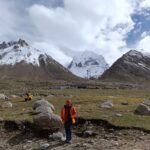
Kailash Mansarovar Yatra Overland via Kerung
Travel alone one month in Nepal and Tibet in September 2024.
Arranging my trip from Spain I was immensely lucky to contact TN, whose company is based in Kathmandu. TN is an expert in Trekking and travel throughout Nepal and Tibet.
I have been traveling alone for many years and I have never encountered a treatment so professional and at the same time so close.
TN is a wonderful and enthusiastic person, always dedicated and looking out for you to feel well, taking care of every detail or need that arises along the way to make your trip that dream come true.
Her great effectiveness and her friendly and infectious smile made me feel accompanied at all times as part of her family and not just as a client.
I recommend 100 percent TN as a guide and professional expert for any type of trip, whether sporting, cultural or spiritual, that you want to take in Tibet or Nepal.
Apart from his high professional level, TN will touch your heart.
Thank you so much for that unforgettable month and I hope to come back!
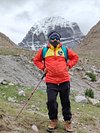
Kailash Mansarovar Yatra Overland via Kerung
The Kailash Mansarovar Yatra was truly a once-in-a-lifetime experience, and we owe it all to the incredible team—Pradip, Sujan, and Sir Tamang, the owner of TN. Their guidance, experience, and genuine care made the entire journey smooth, safe, and deeply spiritual. Every aspect was thoughtfully organized. It wasn’t just a trek—it was a transformation. Truly grateful and highly recommended!
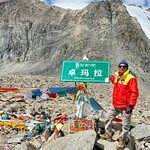
Kailash Mansarovar Yatra Overland via Kerung
I had been planning to visit Kailash, and around the same time, one of my friends also expressed interest in joining the journey. He asked me to send him my passport, and based on that, he handled all the necessary arrangements—visa, permits, and other formalities—right on time.
The entire trip was very well organized. From management, accommodation, and food to transportation, everything was taken care of smoothly. We were supported by an excellent team of guides throughout the journey. During the Kailash Parikrama, we received help and encouragement at every step, which made the experience even more meaningful and fulfilling.
A heartfelt thank you to Trek Curator, the entire team, and especially to Mr. TN Bhatta for making this spiritual journey so memorable and successful.
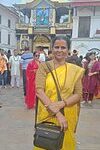
Kailash Mansarovar Yatra Overland via Kerung
I recently traveled to Nepal with my friend, and we chose a local company, Trek Curator, for our trip. It was an excellent decision — the service was outstanding from start to finish. Through them, we also went on the Mount Kailash tour, which was exceptionally well organized and unforgettable.
A big thank you to the Curator Team and especially to the Director, Mr. TN Bhatta, for making this experience so special. Highly recommended!
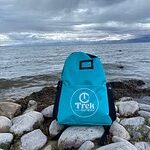
Kailash Mansarovar Yatra Overland via Kerung
My friend and I had been thinking about visiting Kailash for a while. During our planning, we came across Trek Curator, and after receiving a detailed 10-day itinerary from them, we felt confident and decided to go ahead with their team.
From start to finish, the trip was incredibly well organized. The accommodations were clean and comfortable, and the entire team was friendly, supportive, and professional. One of the highlights was the Mansarovar Parikrama, which was beautifully guided and spiritually uplifting. We stayed at a newly built, well-maintained hotel near the lake, did our morning pujas there, and then continued to Darchen to begin the main part of the journey, the Kailash Parikrama.
The Parikrama itself was tough both mentally and physically, but it was handled with great care by the team. You definitely need motivation and a strong mindset for this journey, and thanks to the team’s constant support and encouragement, we successfully navigated it.
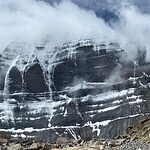
Kailash Mansarovar Yatra Overland via Kerung
We recently completed the Kailash Mansarovar Yatra with Trek Curator, and the experience was absolutely unforgettable. Everything was so well-organized, and the guides were not only professional but also incredibly kind and supportive throughout the journey. This is a challenging pilgrimage, but Trek Curator made it smooth and meaningful for us. If you’re planning to go, I honestly couldn’t recommend them enough. Huge thanks to the entire team for making it such a memorable experience!

